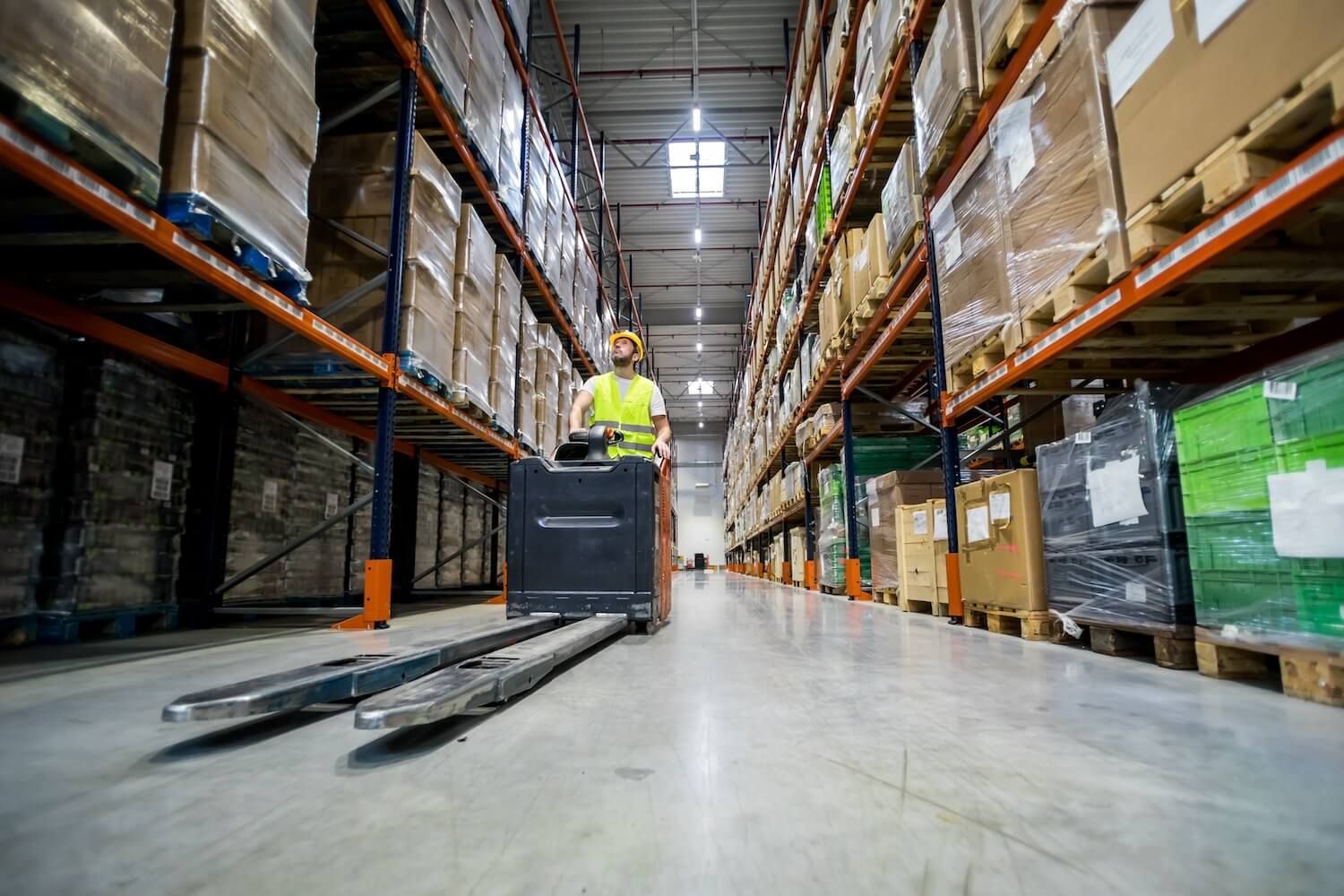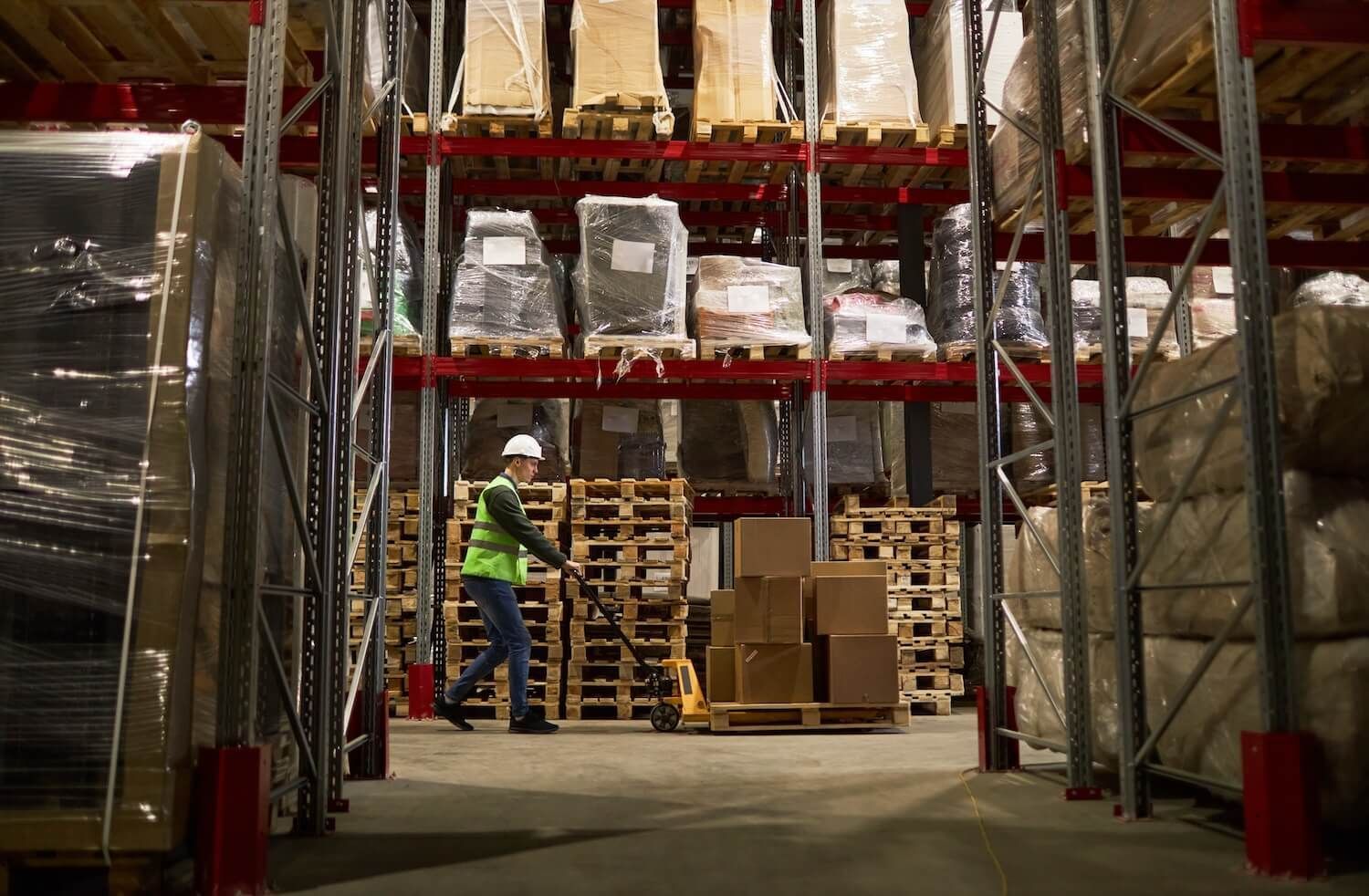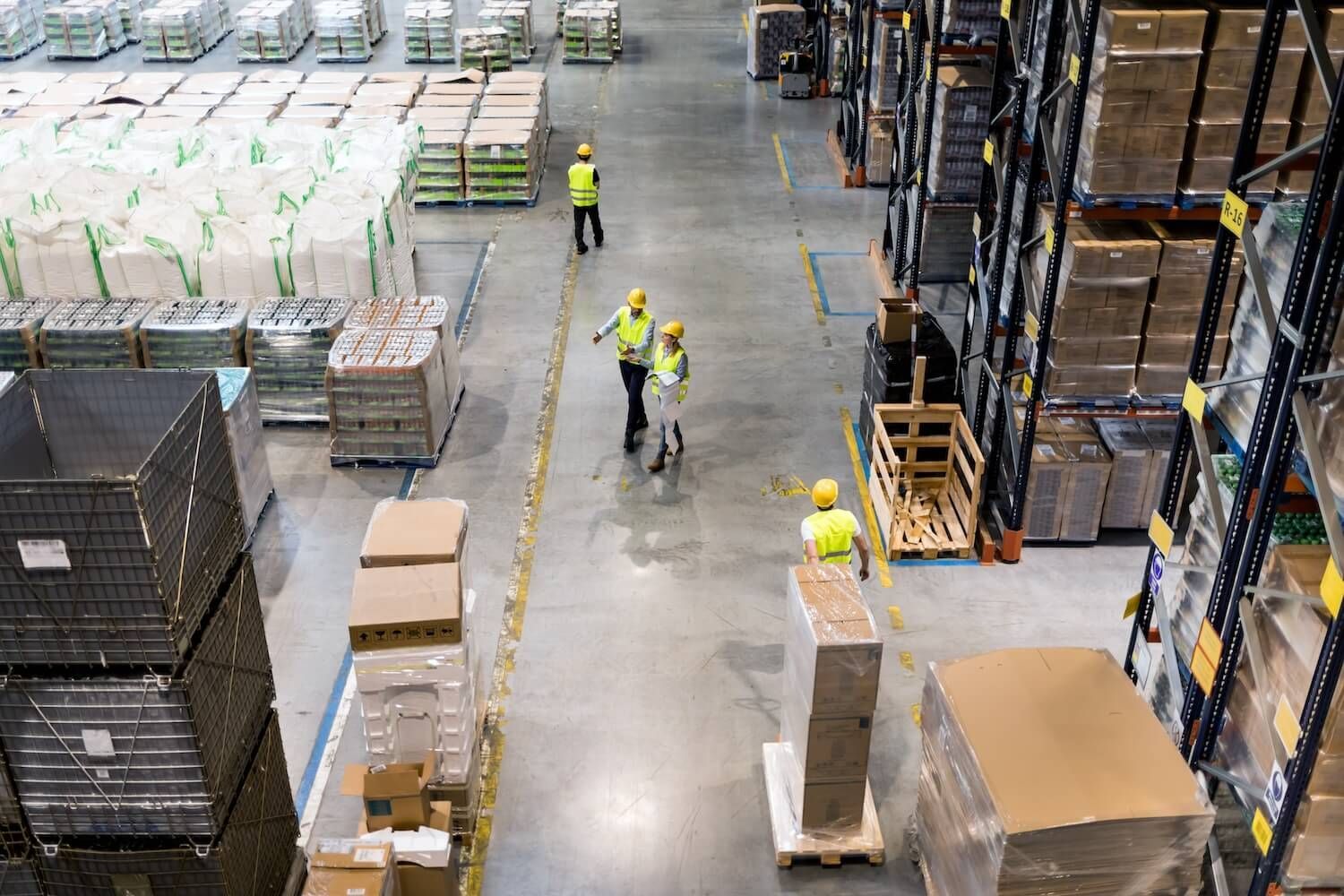Business Inventory Agility: The Secret Weapon for E-commerce in a Volatile Market

The hum of the conveyor belt, once a steady rhythm, now falters for many e-commerce businesses. For years, inventory flowed predictably, from international suppliers to centralized distribution centers. Then came sudden disruptions: tariffs, trade disputes, and global events. Supply chains, once robust, became brittle. Shipments stalled, costs surged, and products customers eagerly sought were trapped in logistical limbo. The once-manageable demand cycles became chaotic, leaving businesses with either excess stock or frustrated customers facing "out of stock" notifications. This instability isn't just an economic footnote; it represents profound operational challenges for e-commerce entrepreneurs.
This situation isn't merely about market shifts; it's about the very real anxieties faced by dedicated business owners. It includes late nights recalculating lead times, the gnawing worry of cash flow uncertainty, and the disheartening messages from loyal customers about unavailable items. The global landscape has transformed, rendering traditional inventory management, built for stability, inadequate. A single, centralized warehouse, once efficient, has become a point of vulnerability, a bottleneck in a world demanding fluidity. Traditional fulfillment, slow and inflexible, struggles to keep pace with rapid shifts in consumer behavior and global trade. Businesses find themselves in a perpetual reactive mode, consistently playing catch-up, eroding profits, and losing invaluable customer trust.
Why Traditional E-commerce Inventory Models Are Failing
For decades, the standard approach to e-commerce inventory involved a large, central warehouse for storage and shipping. This model was effective in predictable environments. However, predictability is no longer a given. Global events—trade wars, pandemics, geopolitical tensions—can severely disrupt supply chains, from sourcing raw materials to final delivery.
Consider the direct impact of sudden tariffs on goods from a specific region. An e-commerce brand reliant on a single large shipment from that area faces a massive cost increase, making products uncompetitive or eliminating profit margins. The difficult choices include absorbing costs, raising prices (risking customer alienation), or halting sales.
Beyond external shocks, customer expectations have evolved significantly. The "fast delivery" standard set by major players means customers now expect rapid shipping, often within a day. A single, centralized warehouse struggles to meet this speed expectation across a wide geographic area without incurring prohibitive shipping costs. This forces a dilemma: optimize for cost (slower delivery) or optimize for speed (higher cost), neither of which is sustainable long-term. The inherent rigidity of these traditional systems leaves businesses vulnerable, unable to adapt swiftly to market demands. They are designed for calm conditions, not the turbulent waters e-commerce brands now navigate.
Inventory Agility: Your Strategy for a Volatile Market
The solution for e-commerce lies in inventory agility – the capacity to rapidly and effectively adjust inventory management and fulfillment strategies in response to market changes. This approach builds resilience and responsiveness directly into operations, transforming a potential weakness into a significant competitive advantage.
Think of an agile inventory system as a fluid, adaptable organism, rather than a fixed structure. It's not simply about having more or less inventory; it's about possessing the right products, in the right locations, at precisely the right time, while maintaining the flexibility to pivot instantly. This includes the ability to scale operations up or down, reroute shipments, and re-optimize logistics without a complete infrastructural overhaul. This approach shifts from mere "optimization" to genuine "transformation," enabling businesses to not only survive but thrive amidst uncertainty.
The Strategic Advantage: On-Demand and Distributed Business Warehousing
How can an e-commerce brand achieve this crucial agility? The strategic pairing of on-demand warehousing and distributed fulfillment provides the answer.
On-Demand Warehousing: Scalable Markets Storage Solutions
Imagine the need for extra storage capacity due to an unexpected surge in inventory, perhaps from a large seasonal order or a strategic bulk purchase to mitigate future tariff risks. In traditional models, businesses are often tied to long-term leases, resulting in wasted costs during slow periods or frantic searches for temporary solutions during peak demand.
On-demand warehousing revolutionizes this rigid structure. It provides access to a vast network of warehouses, allowing businesses to pay only for the space and services utilized, precisely when needed. This flexibility is transformative for managing unpredictable inventory fluctuations.
- Cost Efficiency: Eliminate payments for unused square footage. Storage costs directly align with inventory levels, freeing capital for growth initiatives.
- Rapid Scalability: During a holiday rush, quickly secure additional space without long-term commitments. Scale back just as easily when demand subsides.
- Risk Mitigation: If a trade dispute renders one sourcing region unviable, businesses can swiftly pivot to another, storing goods closer to new suppliers or customers without being bound by a fixed warehouse in a disadvantaged location. This proactive risk management is invaluable.
On-demand warehousing acts as a flexible buffer, absorbing market shocks and allowing businesses to expand or contract as needed, without the crippling overhead of traditional fixed-lease models. It converts a fixed operational cost into a variable one, offering unparalleled financial adaptability.
Distributed Fulfillment: Proximity to Customers
Complementing on-demand warehousing is distributed fulfillment. Instead of a single, central warehouse, this strategy involves positioning inventory across multiple smaller fulfillment centers located closer to end customers.
- Accelerated Delivery: This is the primary and most significant benefit. By reducing the "last mile" distance, businesses can offer substantially faster shipping times, often same-day or next-day, at a fraction of the cost of expedited shipping from a distant hub. This directly addresses critical customer expectations for speed.
- Reduced Shipping Costs: Shorter transit distances lead to lower fuel expenses, fewer transit days, and access to more affordable regional carriers. This directly improves profitability and supports more competitive pricing.
- Enhanced Customer Satisfaction: Faster, more reliable delivery directly contributes to higher customer satisfaction, fewer abandoned carts, and increased repeat purchases. In today's competitive landscape, delivery speed is a key differentiator.
- Geographic Resilience: Should a natural disaster, political event, or unexpected disruption affect a specific region, the entire fulfillment operation remains unaffected. Orders can be rerouted to alternative fulfillment centers, ensuring service continuity.
- Optimized Inventory Placement: Leveraging data analytics allows for strategic inventory placement, ensuring products are stored precisely where demand is highest. This minimizes transit times and maximizes sales velocity.
Together, on-demand and distributed warehousing create a powerful synergy. This approach not only provides flexible inventory storage but also strategically positions inventory to optimize for speed and cost, while simultaneously building layers of resilience against market shocks.

The Agile Advantage: Navigating Online Market Turbulence
An agile inventory strategy fundamentally changes how an e-commerce business responds to market fluctuations.
When trade tensions threaten typical supply routes, an agile business can respond proactively. On-demand warehousing enables rapid securing of temporary space in an alternative hub, diversifying inbound logistics. Concurrently, a distributed fulfillment network ensures existing inventory is strategically positioned across key markets. While some shipments might face delays, the impact is localized, not catastrophic. Operations can continue serving customers in unaffected regions swiftly, with new stock rerouted to the nearest available distributed warehouse once cleared.
If demand for certain products surges unexpectedly due to a trending social media phenomenon, the flexible fulfillment network absorbs this shock. Businesses can instantly allocate more inventory to regions experiencing the spike, fulfilling orders rapidly and capitalizing on the trend before competitors, still constrained by centralized hubs, can react. Conversely, if demand for a product wanes, businesses are not burdened with excess inventory in an expensive, single location. Stock can be consolidated or liquidated more efficiently across the distributed network, minimizing holding costs.
This isn't merely about surviving market turbulence; it's about navigating it with greater speed and confidence. Agility empowers e-commerce businesses to:
- Address Supply Chain Disruptions: Whether from trade disputes, natural disasters, or port closures, flexible inventory and distributed networks enable rerouting, restocking, and continuous operation, minimizing downtime and lost sales.
- Capitalize on Market Opportunities: Identify a sudden surge in demand in a specific region. With inventory nearby, businesses can quickly meet this demand, outpacing slower competitors.
- Dynamically Optimize Costs: Adjust warehousing space and shipping strategies based on real-time demand and supply conditions, ensuring peak operational efficiency without wasted resources.
- Enhance Customer Experience: Consistently deliver on the promise of fast, reliable shipping, cultivating brand loyalty and trust that drives repeat business and positive referrals.
This strategic approach transforms e-commerce logistics from a mere cost center into a significant competitive differentiator. It’s about creating a supply chain that is not just robust, but inherently intelligent and adaptive.
Building Your Agile Online Foundation: A Practical Path
Implementing an agile inventory strategy might seem complex, yet it's more accessible than ever due to advancements in e-commerce logistics technology and specialized service providers. The core shift involves moving away from owning physical infrastructure towards leveraging a network-based approach.
Here’s a practical outline:
- Current State Assessment: Analyze existing inventory patterns, customer geographical distribution, and current fulfillment bottlenecks. Identify key vulnerabilities and areas where shipping costs are high or customer satisfaction is suffering due to slow delivery.
- Network Mindset Adoption: Conceptualize inventory not as a static quantity in one location, but as a dynamic asset that can be strategically positioned across an adaptable network.
- Strategic Partnerships: Engage with specialized flexible warehousing and fulfillment solutions providers. These partners offer access to extensive networks of on-demand storage and distributed fulfillment centers, often powered by intelligent algorithms for optimized inventory placement and shipping routes. This approach leverages existing, proven infrastructure, eliminating the need to build and maintain such networks internally.
- Data-Driven Automation: The effectiveness of these solutions often stems from integrated technology. Real-time data on sales trends, inventory levels, and shipping performance facilitates automated decision-making and continuous optimization, ensuring inventory always serves business objectives efficiently.
This strategy extends beyond mere outsourcing; it represents a strategic partnership that equips businesses with capabilities that would be otherwise impractical to develop or maintain internally. It allows businesses to concentrate on their core competencies—product innovation, marketing, and customer engagement—while their logistics infrastructure dynamically adapts to market conditions.
The Ecommerce Future Belongs to the Agile
In a world where market stability is increasingly rare, inventory agility is not merely an option; it is an essential requirement for survival and growth in e-commerce. It represents the strategic advantage that enables brands to pivot, adapt, and truly thrive amidst unprecedented volatility. It transforms challenges into opportunities, turning market disruptions into competitive gains.
Imagine the peace of mind knowing that regardless of geopolitical shifts or sudden surges in consumer demand, your e-commerce operations are designed to flex, not break. Envision the clarity gained from real-time inventory insights, empowering proactive, data-driven decisions. Feel the motivation that comes from consistently delighting customers with swift, reliable delivery, cultivating a loyal community around your brand.
This is not a far-off vision. It is the tangible reality available to e-commerce brands prepared to move beyond outdated, rigid models and embrace the future of flexible, responsive logistics. It's time to transition from reacting to the market to actively shaping your destiny within it.
Boost your e-commerce agility with our flexible warehousing and fulfillment solutions. Take the first step towards a resilient and responsive future – connect with
Razr Logistics today to explore how our network can transform your inventory management and fulfillment operations.












 by
by